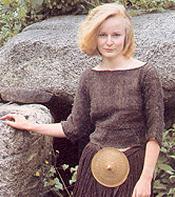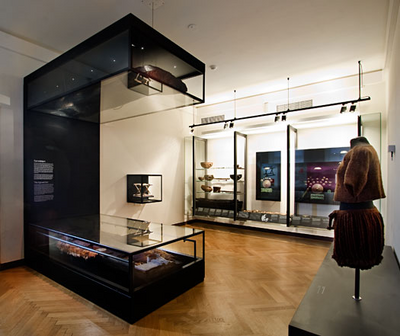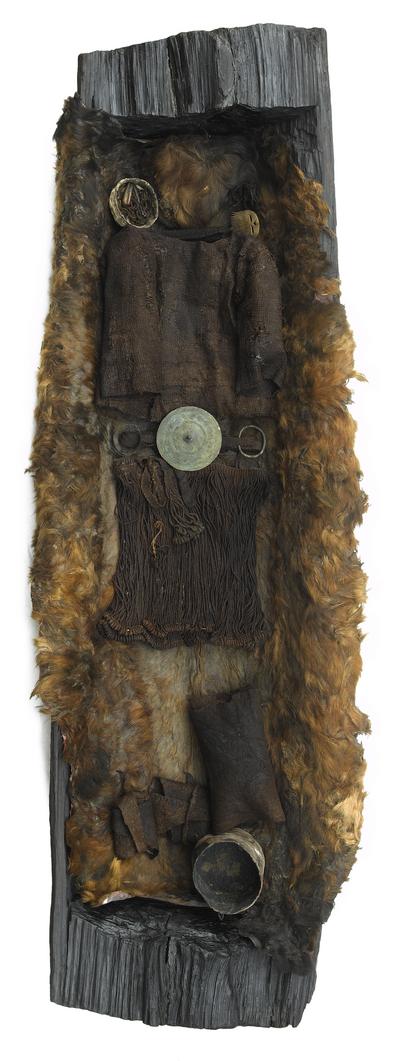The Egtved Girl
The Egtved Girl is one of the best-known figures from prehistory. One summer’s day in 1370 BC she was buried in an oak coffin that was covered by the barrow Storehøj near Egtved, west of Vejle. Although not much is left of the Egtved Girl, her tale is a captivating story of the Bronze Age people.
Of the girl herself only hair, brain, teeth, nails and a little skin remain. Her teeth reveal that she was 16-18 years old when she died. On her body she wore a short tunic and a knee-length skirt made of cords. A belt plate of bronze decorated with spirals lay on her stomach. She also had a comb made of horn with her in the grave, attached to her belt. Around each arm was a ring of bronze and she had a slender ring in her ear. By her face lay a small box of bark with a bronze awl and the remains of a hair net. At the feet of the Egtved Girl a small bucket of bark had been placed, which once contained a type of beer. There was also a small bundle of clothing with the cremated bones of a 5-6-year-old child. A few bones from the same child were found in the bark box. The Egtved Girl saw the light of day again when her grave was excavated in 1921 – almost 3500 years later.

Reconstruction of the Egtved Girl's clothes. You can see several examples of this type of dress in the National Museum.
The Egtved Girl had a belt plate on her stomach. It may have been a symbol of the sun, which was the most important element in Bronze Age religion.


